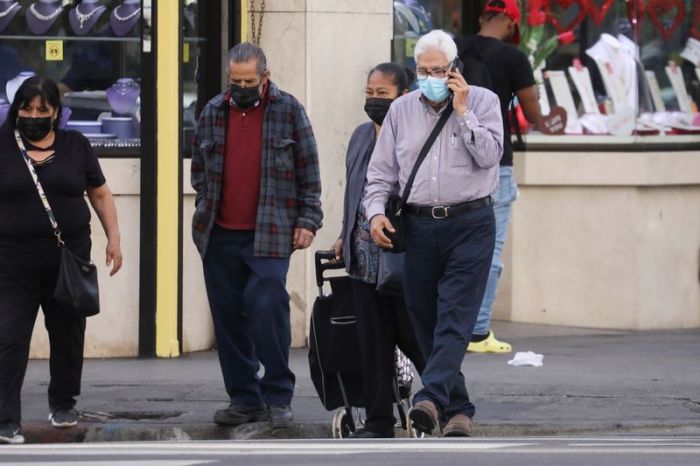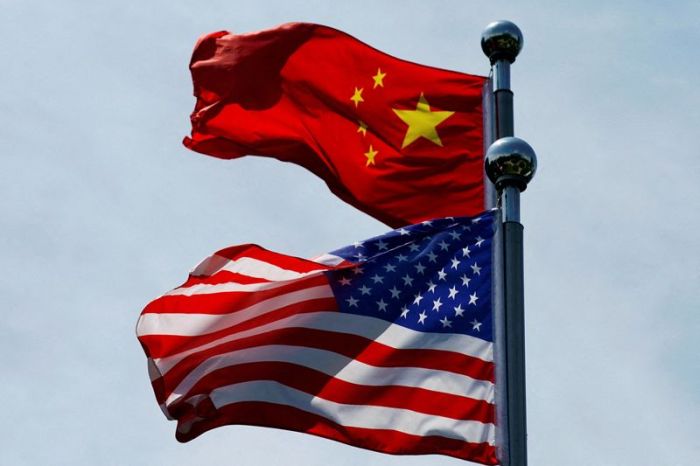SHANGHAI (Reuters) -Authorities in the Chinese city of Shanghai have denied rumours of a city-wide lockdown after a sixth straight increase in daily asymptomatic coronavirus cases pushed its count to record levels despite a campaign of mass testing aimed at stifling the spread.
The latest outbreak in China’s wealthy commercial hub remains tiny by global standards.
But its testing campaign, with many people locked in residential compounds for days, is part of Beijing’s national “dynamic clearance” policy to stamp out flare-ups as quickly as possible.
Daily new local COVID-19 infections in Shanghai neared 1,000 on Tuesday, but authorities vowed to stick with a “slicing and gridding” approach to screen neighbourhoods one by one, rather than shut down entirely.
The lockdown rumours triggered panic buying late on Tuesday night, with slots on Alibaba’s “Freshippo” delivery app running out a minute after midnight.
“Please do not believe and spread rumours,” the city government said on its Weibo microblog site.
Shanghai’s police authority said on Wednesday it was investigating two individuals it accused of “fabricating” lockdown information in order to “attract attention”.
City health official Wu Jinglei said several streets and residential compounds had been unsealed after testing, but some areas faced another round on Wednesday and Thursday, as the focus of its efforts was narrowed.
The city is using two stadiums as quarantine facilities for mild cases and asymptomatic carriers, Wu told a news briefing.
The municipality reported 977 domestically transmitted asymptomatic infections for Tuesday, data from the National Health Commission (NHC) showed, up from 865 a day earlier.
It also reported four local cases with confirmed symptoms, which China counts separately, down from 31 a day earlier.
‘INFINITE LOOP’
Throughout the city, while some compounds were unsealed, others were shut for several more days to try to eliminate transmission chains. Some residents said they would be sealed off for two weeks after a neighbour tested positive.
One resident posting on Weibo under the username “Zhang Fan’s Viewpoint” said authorities might as well lock the city down and put an end to the uncertainty caused by 48-hour lockdowns for testing, which are often extended.
“This infinite loop of 48 hours plus 48 hours plus 48 hours is more likely to cause ordinary people to lose control of their emotions,” the resident said.
Mainland China reported 2,591 locally transmitted cases with confirmed symptoms on Tuesday, compared with 2,281 a day earlier, NHC data showed. The number of new local asymptomatic cases stood at 2,346 compared with 2,313 a day earlier.
The top steelmaking city of Tangshan said late on Tuesday residents who were not essential workers must stay home unless in an emergency or they needed to be tested. The city government did not say when the lockdown would be lifted.
The northeastern city of Shenyang announced that its 9 million residents would have to go through another three rounds of testing from Thursday through to March 30, after the three rounds already completed.
During the week of testing, Shenyang companies, with the exception of essential ones, must suspend operations or have employees work from home, the city government said.
BMW Group said production at all its plants in Shenyang would be suspended from Thursday. BMW and its joint venture partner Brilliance China Automotive have a production base in the city that includes two vehicle plants, a research and development centre and a powertrain plant.
China’s latest waves of infections and local governments’ virus measures have also hit the cultural and entertainment sectors, with the China Association of Performing Arts expecting the cancellation or postponement of about 9,000 performances in the first three months the year.
Incomes from performances over that time are expected to fall by more than 35% compared with the same period last year, the association said.
By March 22, mainland China had reported 137,231 cases with confirmed symptoms, including both local ones and those arriving from outside the mainland. There were no new deaths, leaving the death toll at 4,638.
(Reporting by David Stanway, Roxanne Liu, Brenda Goh, the Shanghai newsroom, Stella Qiu and Yifan Wang; Editing by Michael Perry, Robert Birsel and Alison Williams)




















